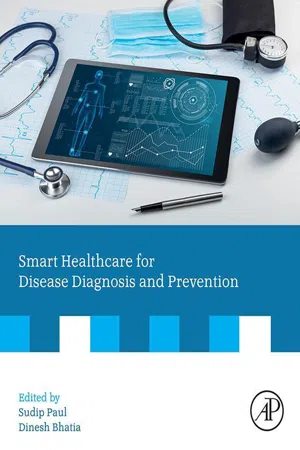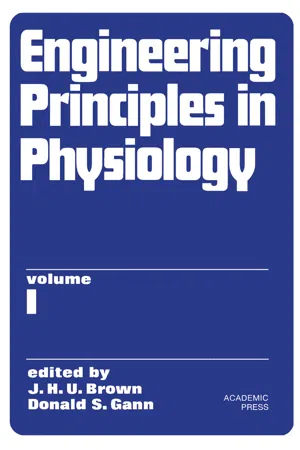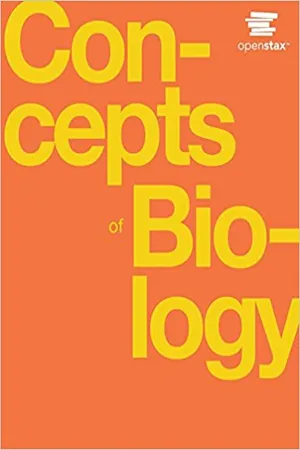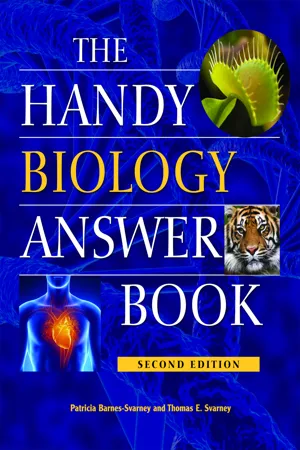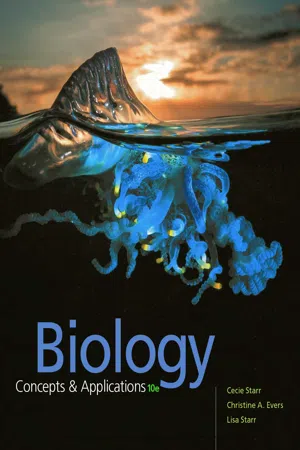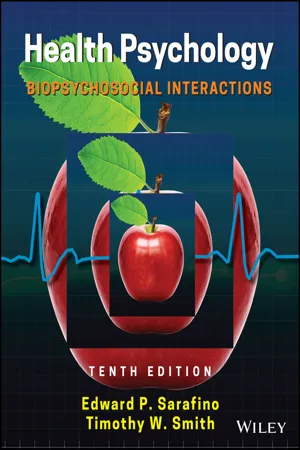Biological Sciences
Animal Body Systems
Animal body systems are groups of organs and tissues that work together to perform specific functions. These systems include the digestive, respiratory, circulatory, nervous, muscular, skeletal, and reproductive systems. Each system has a unique role in maintaining the overall health and function of the organism, allowing animals to survive and thrive in their environments.
Written by Perlego with AI-assistance
Related key terms
1 of 5
8 Key excerpts on "Animal Body Systems"
- Sudip Paul, Dinesh Bhatia(Authors)
- 2020(Publication Date)
- Academic Press(Publisher)
The field of physiology is one that has been extensively discovered and explored in the past and at present it is the subject of increasing interest for obvious reasons. The above review history discusses only the initial discoveries in physiology and discoveries are still in continuation from the day of Harvey’s experiment till today. At present also it is the subject of increasing interest and will remain so in future.19.1.2 Biological systems
The human body contains a number of systems that work together to maintain homeostasis [2] . The functioning of the human body is regulated by the number of system like digestive, circulatory, respiratory and urinary systems perform processing and transporting functions that maintain the normal condition of the body. The musculoskeletal system explains the movement phenomena. The chief systems enclosed in the study of human physiology and their functions are as follows:- 1. Integumentary system : Skin and its derivatives
- 2. Musculoskeletal system : Skeletal and muscles
- 3. Digestive system : Breakdown of complex food material into simple one.
- 4. Respiratory system : Exchange of gases between human body and environment
- 5. Circulatory system : Circulation of different element in the body
- 6. Nervous system : Coordinates and controls all the activities
- 7. Reproductive system : Sex organs working together for reproduction
- 8. Endocrine system : Chemical mediators regulating the activity of cells or organs
- 9. Excretory/urinary system : Removal of waste products from the body
- 10. Immune system : Defence mechanism of body
19.1.3 Branches
Initially physiology was considered a single branch of biology but with the vast discoveries of bodily system there have been great number of disciplines that encompasses as below:- • General physiology - Study of the vital phenomena concerning the living organism as a whole.
- • Cellular physiology
- eBook - PDF
- J. H. U. Brown, Donald S. Gann(Authors)
- 2014(Publication Date)
- Academic Press(Publisher)
Part I THE SYSTEM AS A WHOLE THE HUMAN BODY is a system. It can be pictured as a black box with energy inputs, controlling circuits, and an output. Too often physiology is discussed in terms of .swèsystems: the renal system, the cardiovascular system, etc. Al-though we are forced by convention and by the complexity of the system as a whole to talk in similar terms in later chapters, it seems wise to begin a book of engineering principles in physiology by looking at the whole system. We begin by looking at the systems concept in biology and its application to developing a theoretical base for understanding biological principles. It is also essential to understand the application of general information theory to biology, since so much of physiological stimulus and response is a function of the communication system and statistical information theory. Finally, dis-cussion of the system would not be complete without an example in the living organism. The quality of life or the absence of it may be a way of looking at the function of the system as a whole. Systems Biology as a Concept* F. EUGENE Y AT ES Department of Biomedicai Engineering University of Southern California Los Angeles, California I. INTRODUCTION A living system is an arrangement of matter that yields an ensemble of properties which, taken as a whole, characterize the system as living. Table I presents a view of the relationships among major subdivisions of biology. The science of physiology generally concerns the understanding of function in complete living individual organisms of all kinds. It embraces studies of all the levels of organization from molecular to individual man, and it is equally dependent on both analysis and synthesis. Π. SYSTEMS PHYSIOLOGY A. Definitions The central concept of this branch of physiology is that an arrangement of biological components, coupled, connected, and interacting, has properties beyond the sum of those to be found in the components individually. - eBook - PDF
- Samantha Fowler, Rebecca Roush, James Wise(Authors)
- 2016(Publication Date)
- Openstax(Publisher)
16 | THE BODY’S SYSTEMS Figure 16.1 An arctic fox is a complex animal, well adapted to its environment. (credit: Keith Morehouse, USFWS) Chapter Outline 16.1: Homeostasis and Osmoregulation 16.2: Digestive System 16.3: Circulatory and Respiratory Systems 16.4: Endocrine System 16.5: Musculoskeletal System 16.6: Nervous System Introduction The arctic fox, a complex animal that has adapted to its environment, illustrates the relationships between an animal’s form and function. The multicellular bodies of animals consist of tissues that make up more complex organs and organ systems. The organ systems of an animal maintain homeostasis within the multicellular body. These systems are adapted to obtain the necessary nutrients and other resources needed by the cells of the body, to remove the wastes those cells produce, to coordinate the activities of the cells, tissues, and organs throughout the body, and to coordinate the many responses of the individual organism to its environment. Chapter 16 | The Body’s Systems 403 16.1 | Homeostasis and Osmoregulation By the end of this section, you will be able to: • Explain the concept of homeostasis • Describe thermoregulation of endothermic and ectothermic animals • Explain how the kidneys serve as the main osmoregulatory organs in the human body Homeostasis refers to the relatively stable state inside the body of an animal. Animal organs and organ systems constantly adjust to internal and external changes in order to maintain this steady state. Examples of internal conditions maintained homeostatically are the level of blood glucose, body temperature, blood calcium level. These conditions remain stable because of physiologic processes that result in negative feedback relationships. If the blood glucose or calcium rises, this sends a signal to organs responsible for lowering blood glucose or calcium. The signals that restore the normal levels are examples of negative feedback. - No longer available |Learn more
- Cecie Starr, Christine Evers, Lisa Starr, , Cecie Starr, Christine Evers, Lisa Starr(Authors)
- 2015(Publication Date)
- Cengage Learning EMEA(Publisher)
Due to electronic rights, some third party content may be suppressed from the eBook and/or eChapter(s). Editorial review has deemed that any suppressed content does not materially affect the overall learning experience. Cengage Learning reserves the right to remove additional content at any time if subsequent rights restrictions require it. ANIMAL TISSUES AND ORGANS CHAPTER 19 383 Figure 19.12 Human organ systems. 1 Integumentary System Protects body from injury, dehydration, pathogens; moderates temperature; excretes some wastes; detects external stimuli. 2 Nervous System Detects external and internal stimuli; coor-dinates responses to stimuli; integrates body activities. 3 Endocrine System Secretes hormones that control activity of other organ systems. (Male testes added.) 6 Circulatory System Distributes materials and heat through the body; helps maintain pH. 5 Skeletal System Supports and protects body parts; site of muscle attachment; produces red blood cells; stores minerals. 4 Muscular System Moves the body and its parts; maintains posture; produces heat to maintain body temperature. 7 Lymphatic System Collects and returns tissue fluid to the blood; defends the body against infection, cancers. 8 Respiratory System Takes in oxygen necessary for aerobic respiration; expels carbon dioxide released by this pathway. 9 Digestive System Takes in food and water; breaks food down and absorbs needed nutri-ents, then eliminates food residues. a Reproductive System Female: Produces eggs; nourishes and protects developing offspring. Male: Produces sperm and trans-fers them to a female. 0 Urinary System Maintains volume and composition of blood; excretes excess fluid and wastes. Take-Home Message 19.4 What are the roles of organs and organ systems? • The cells and tissues of an organ are organized to collectively carry out one or more essential tasks. - eBook - ePub
- Patricia Barnes-Svarney, Thomas E. Svarney(Authors)
- 2014(Publication Date)
- Visible Ink Press(Publisher)
PHYSIOLOGY: ANIMAL FUNCTION AND REPRODUCTION PHYSIOLOGY BASICS What is physiology? Physiology is the term used to describe the study of the function of living organisms, or the science that examines the processes and mechanisms by which living organisms (plants and animals; for our discussion in this chapter, we will concentrate on animals) function under various conditions. The term “physiology” was first used by the Greeks as early as 600 B. C. E. to describe a philosophical inquiry into the nature of things. It was not until the sixteenth century that the term was used in reference to vital activities of humans. During the nineteenth century, its usage was expanded to include the study of all living organisms using chemical, physical, and anatomical experimental methods (for more about the anatomy, or physical attributes, of animals, see the chapter “Anatomy: Animals Inside”). Who is considered the “founder of physiology”? As an experimenter, Claude Bernard (1813–1878) enriched physiology by introducing numerous new concepts into the field. The most famous of these concepts is that of the French milieu intérieur or, loosely translated, the body’s “internal environment.” This means that the complex functions of the various organs are closely interrelated and are all directed to maintaining a constancy of the animal’s internal conditions, even with external changes. All internal cells exist in a combination of blood and lymph (thus, aqueous) environment that bathes the cells and provides a medium for the simple exchange of nutrients and waste material. What is homeostasis, and when was the term first used? American physiologist Walter Bradford Cannon (1871–1945), who elaborated on Claude Bernard’s concept of the milieu intérieur, used the term “homeostasis” to describe the body’s ability to maintain a relative constancy in its internal environment. It depends on the coordination of thousands of chemical reactions within the cells all at the same time - eBook - PDF
Biology
Concepts and Applications
- Cecie Starr, Christine Evers, Lisa Starr, , Cecie Starr, Christine Evers, Lisa Starr(Authors)
- 2017(Publication Date)
- Cengage Learning EMEA(Publisher)
The endocrine system consists of hormone-secreting endocrine glands and cells 3. The endocrine system and nervous system work together and both control the activity of other organ systems. The muscular system consists of individual muscles that move the body and its parts 4. This system also plays an important role in regulating body temperature by generating heat. The skeletal system is the body’s framework 5. It pro- 1 Integumentary System Protects body from injury, dehydration, pathogens; moderates temperature; excretes some wastes; detects external stimuli. 2 Nervous System Detects external and internal stimuli; coordinates responses to stimuli; integrates organ system activities. 3 Endocrine System Secretes hormones that control activity of other organ sys- tems. (Male testes added.) 4 Muscular System Moves the body and its parts; maintains posture; produces heat to maintain body temperature. 6 Circulatory System Distributes materials and heat throughout the body. 5 Skeletal System Supports and protects body parts; site of muscle attach- ment; produces blood cells; stores minerals. LEARNING OBJECTIVE List the organ systems in a human body and provide a brief description of the components and function of each. tects internal organs and serves as a point of attachment for skeletal muscles. It also stores minerals and produces blood cells. Bones are organs of the skeletal system. The circulatory system consists of the heart, blood, and blood vessels 6. It cooperates with the respiratory, diges- tive, and urinary systems in delivering oxygen and nutrients to cells throughout the body, and clearing away their wastes 28.6 Organ Systems 490 U N I T 6 HOW ANIMALS WORK Copyright 2018 Cengage Learning. All Rights Reserved. May not be copied, scanned, or duplicated, in whole or in part. WCN 02-300 (Figure 28.11 ). It also helps regulate body temperature by conveying heat from the body’s warm core to the skin where heat can be lost to the environment. - eBook - PDF
Health Psychology
Biopsychosocial Interactions
- Edward P. Sarafino, Timothy W. Smith(Authors)
- 2021(Publication Date)
- Wiley(Publisher)
2 30 THE BODY’S PHYSICAL SYSTEMS Module 1: The Nervous System How the Nervous System Works The Central Nervous System The Peripheral Nervous System Module 2: The Endocrine System The Endocrine and Nervous Systems Working Together Adrenal Glands Other Glands Module 3: The Digestive System Food’s Journey through Digestive Organs Using Nutrients in Metabolism Module 4: The Respiratory System The Respiratory Tract Respiratory Function and Disorders Module 5: The Cardiovascular System The Heart and Blood Vessels Blood Pressure Blood Composition Cardiovascular Disorders Module 6: The Immune System Antigens The Organs of the Immune System Soldiers of the Immune System Defending the Body with an Immune Response Less-Than-Optimal Defenses PROLOGUE When Tom was born 20 years ago, his parents were thrilled. Here was their first child—a delightful baby with such promise for the future. He looked healthy, and his parents were pleased that he was consuming large amounts of milk, often without becoming satiated. They took this as a good sign. But, in this case, it wasn’t. As the weeks went by, Tom’s parents noticed that he wasn’t gaining as much weight as he should, espe- cially as he was still consuming lots of milk. He started to cough and wheeze often and developed one respira- tory infection after another. They became concerned, and so did his pediatrician. After a series of tests, the devastating diagnosis was clear: Tom had cystic fibrosis, a chronic, progressive, and eventually fatal disease. Cystic fibrosis is an inherited disease of the respira- tory system for which there is no cure and no effective treatment. Tom has had a difficult life, and so has his family. The respiratory infections he had in infancy were just the beginning. His disease causes thick, sticky secretions that constantly block airways, trap air in the lungs, and help bacteria to thrive. - eBook - ePub
- R G Gordon(Author)
- 2005(Publication Date)
- Routledge(Publisher)
CHAPTER IV THE ORGANIZATION OF BODILY FUNCTION
As has been said above, the whole of the body of the higher vertebrates is under the direction and control of the nervous system. Quite apart from the relationship of the body to the environment, the heart, lungs, digestive system and the rest, take their time from, and owe their activity to the action of this system, in such a way that the organization of bodily function entirely depends on it. Destruction of those nervous centres which are responsible for the regulation of these organs, seriously interferes with their action and, in the case of the heart and lungs, results in death. Similarly all activity of muscles, which are responsible for the movements of the body, depend on the influence of the nervous system and are entirely subservient to it. On the other hand, every activity of the muscles and internal organs results in the stimulus of nerves, whose business it is to convey messages back to the nervous centres. In this way there is a continuous interchange of messages and influences from nervous system to organs and from organs to nervous system, by the intervention of the peripheral nerves. At the same time, the various organs produce chemical substances which circulate in the blood and influence all other organs and especially the activity of the nervous system. With this question of “temperament” we shall deal in the next chapter. For the present, it is proposed to discuss the organization of the nervous system itself, since upon it depends the organization of the whole body. This system consists of a central part concerned with the reception and transmission of messages, analogous to the exchange in a telephone system, and of a peripheral part composed of the nerves which convey messages between the nervous system and the end organs. These nerves are analogous to the wires of the telephone. The end organs are the structures by means of which messages are received from the organs, or in the case of the special senses, from the environment, and transmitted to the central exchange, and are analogous to the instruments belonging to the various subscribers to the telephone system.
Index pages curate the most relevant extracts from our library of academic textbooks. They’ve been created using an in-house natural language model (NLM), each adding context and meaning to key research topics.
